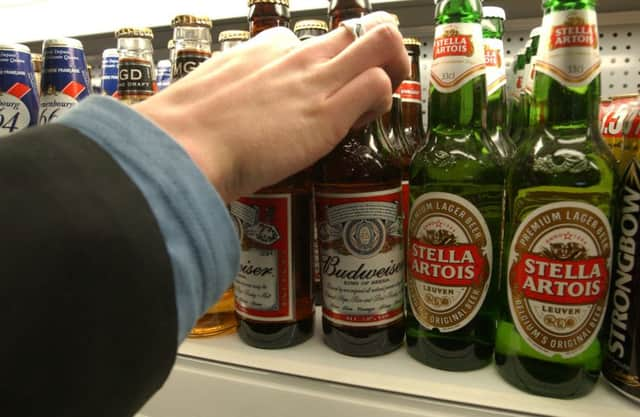Lizzy Buchan: Information on alcohol use must lead to action


Booze bubbles unseen within the bloodstream of our society – so much so that very few people think twice about their drinking. Yet Scotland’s abusive relationship with alcohol is well documented, claiming the lives of around 20 people per week.
Not everyone is a “problem drinker”, but it is becoming more and more difficult to define how much is too much when it comes to our health.
Advertisement
Hide AdAdvertisement
Hide AdThe latest NHS drinking guidelines advise both men and women not to exceed 14 units of alcohol in a week – which should not be saved up for a binge. The UK’s chief medical officers insist there is no harmless level of drinking and scientists have found seven cancers that are linked to drinking alcohol, including breast, mouth and bowel cancer.
It seems that our history and our surroundings can shape our attitudes and our behaviours when it comes to booze.
Glasgow University published an interesting piece of research this week, which found young women in particular were more likely to drink heavily in later life if they went to university.
Also, those who were teenage smokers were more likely to drink weekly as an adolescent and more heavily in early adulthood.
Heavy drinking is often linked to deprivation, but this research points out that the gateway to alcohol abuse is much more varied than originally thought.
Teasing these strands out takes work, but there is important information to be gained, as it could help to provide targeted interventions in universities and beyond.
In some ways this makes sense as the patterns we develop when we are younger, particularly at such crucial points in our lives as going to university, away from parental control for the first time, can be hard to shift.
Earlier this week, Edinburgh experts found Irish people living in Scotland were twice as likely to end up in hospital or die from alcohol-related illnesses than white Scots.
Advertisement
Hide AdAdvertisement
Hide AdThe risk for women of mixed ethnicity in Scotland was twice that of white Scottish people, while those of Pakistani and Chinese origin had the lowest risk.
Important lessons can clearly be learned from the communities with the lowest risks and more work should be done to find ways to share that knowledge across the rest of the country.
These studies do much to inform our understanding of alcohol abuse and they can help target resources to areas where they are most needed.
However, it does not absolve us of the need to do more to tackle the issue.
The Scottish Government has tried to curb consumption of cheap, high-strength alcohol with its proposed minimum unit pricing legislation, as cut-price ciders and own brand spirits tend to appeal to problem drinkers.
Public health experts have also called for curbs on alcohol marketing and geographic distribution of off-licences and pubs, which are thought to have an impact on drinkers across the board.
As pressures on the NHS continue to rise, it is imperative that more is done to tackle the burden of alcohol abuse on Scottish hospitals.